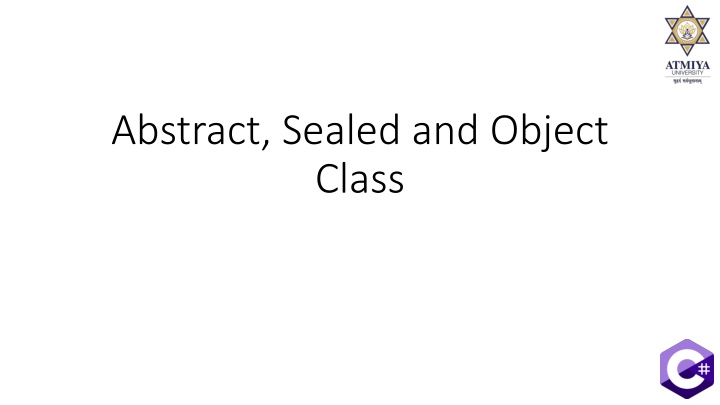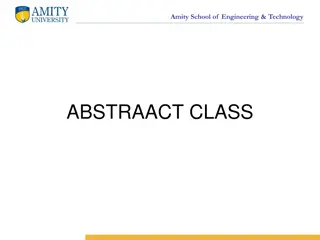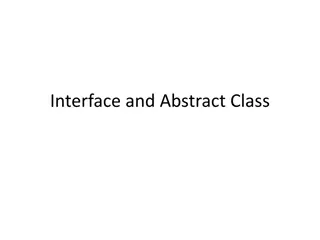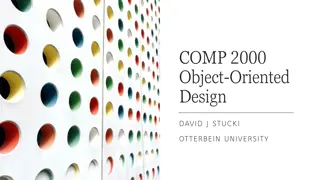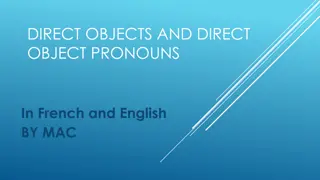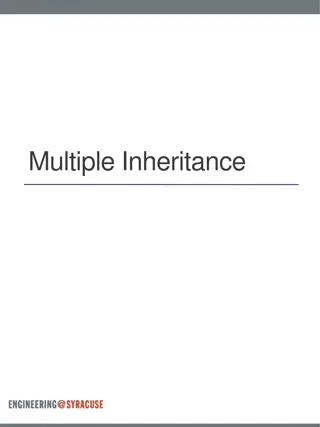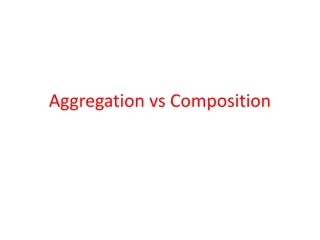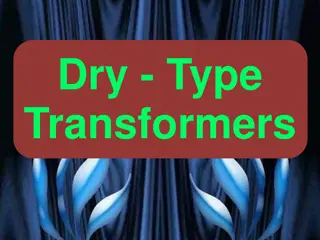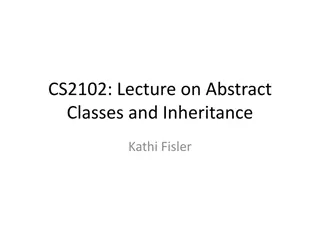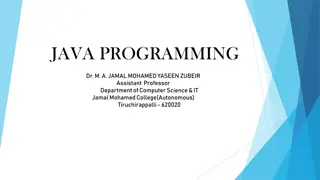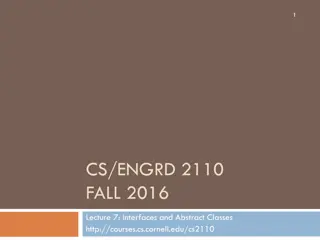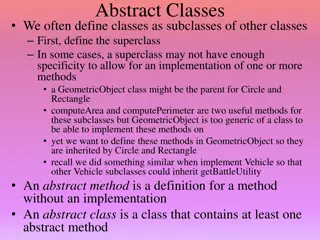Abstract, Sealed and Object Class
In programming, understanding abstract, sealed, and object classes is crucial. Abstract classes serve as blueprints for other classes, while sealed classes restrict inheritance. Object classes are base classes for all classes in C#. Learn the differences, use cases, and benefits of each to enhance your coding skills and design robust applications.
Download Presentation

Please find below an Image/Link to download the presentation.
The content on the website is provided AS IS for your information and personal use only. It may not be sold, licensed, or shared on other websites without obtaining consent from the author.If you encounter any issues during the download, it is possible that the publisher has removed the file from their server.
You are allowed to download the files provided on this website for personal or commercial use, subject to the condition that they are used lawfully. All files are the property of their respective owners.
The content on the website is provided AS IS for your information and personal use only. It may not be sold, licensed, or shared on other websites without obtaining consent from the author.
E N D
Presentation Transcript
Abstract Class Sometimes you will want to create a base class that defines only a generalized form that will be shared by all of its derived classes, leaving it to each derived class to fill in the details. An abstract method is created by specifying the abstract type modifier. An abstract method contains no body and is, therefore, not implemented by the base class. Thus, a derived class must override it. it cannot simply use the version defined in the base class. As you can probably guess, an abstract method is automatically virtual, and there is no need to use the virtual modifier. In fact, it is an error to use virtual and abstract together. To declare an abstract method, use this general form: abstract type name(parameter-list);
Abstract Class As you can see, no method body is present. The abstract modifier can be used only on instance methods. It cannot be applied to static methods. Properties and indexers can also be abstract. A class that contains one or more abstract methods must also be declared as abstract by preceding its class declaration with the abstract specifier. Since an abstract class does not define a complete implementation, there can be no objects of an abstract class. Thus, attempting to create an object of an abstract class by using new will result in a compile-time error. When a derived class inherits an abstract class, it must implement all of the abstract methods in the base class. If it doesn t, then the derived class must also be specified as abstract. Thus, the abstract attribute is inherited until such time as a complete implementation is achieved.
Using sealed to Prevent Inheritance in C# it is easy to prevent a class from being inherited by using the keyword sealed. To prevent a class from being inherited, precede its declaration with sealed. As you might expect, it is illegal to declare a class as both abstract and sealed because an abstract class is incomplete by itself and relies upon its derived classes to provide complete implementations.
Using sealed to Prevent Inheritance One other point: sealed can also be used on virtual methods to prevent further overrrides.
The object Class C# defines one special class called object that is an implicit base class of all other classes and for all other types (including the value types). In other words, all other types are derived from object. This means that a reference variable of type object can refer to an object of any other type. Also, since arrays are implemented as objects, a variable of type object can also refer to any array. Technically, the C# name object is just another name for System.Object, which is part of the .NET Framework class library The object class defines the methods shown in Table, which means that they are available in every object.
Boxing and Unboxing As explained, all C# types, including the value types, are derived from object. Thus, a reference of type object can be used to refer to any other type, including value types. When an object reference refers to a value type, a process known as boxing occurs. Boxing causes the value of a value type to be stored in an object instance. Thus, a value type is boxed inside an object. This object can then be used like any other object. In all cases, boxing occurs automatically. You simply assign a value to an object reference. C# handles the rest.
Boxing and Unboxing Unboxing is the process of retrieving a value from a boxed object. This action is performed using an explicit cast from the object reference to its corresponding value type. Attempting to unbox an object into a different type will result in a runtime error.
Is object a Universal Data Type? Given that object is a base class for all other types and that boxing of the value types takes place automatically, it is possible to use object as a universal data type.
